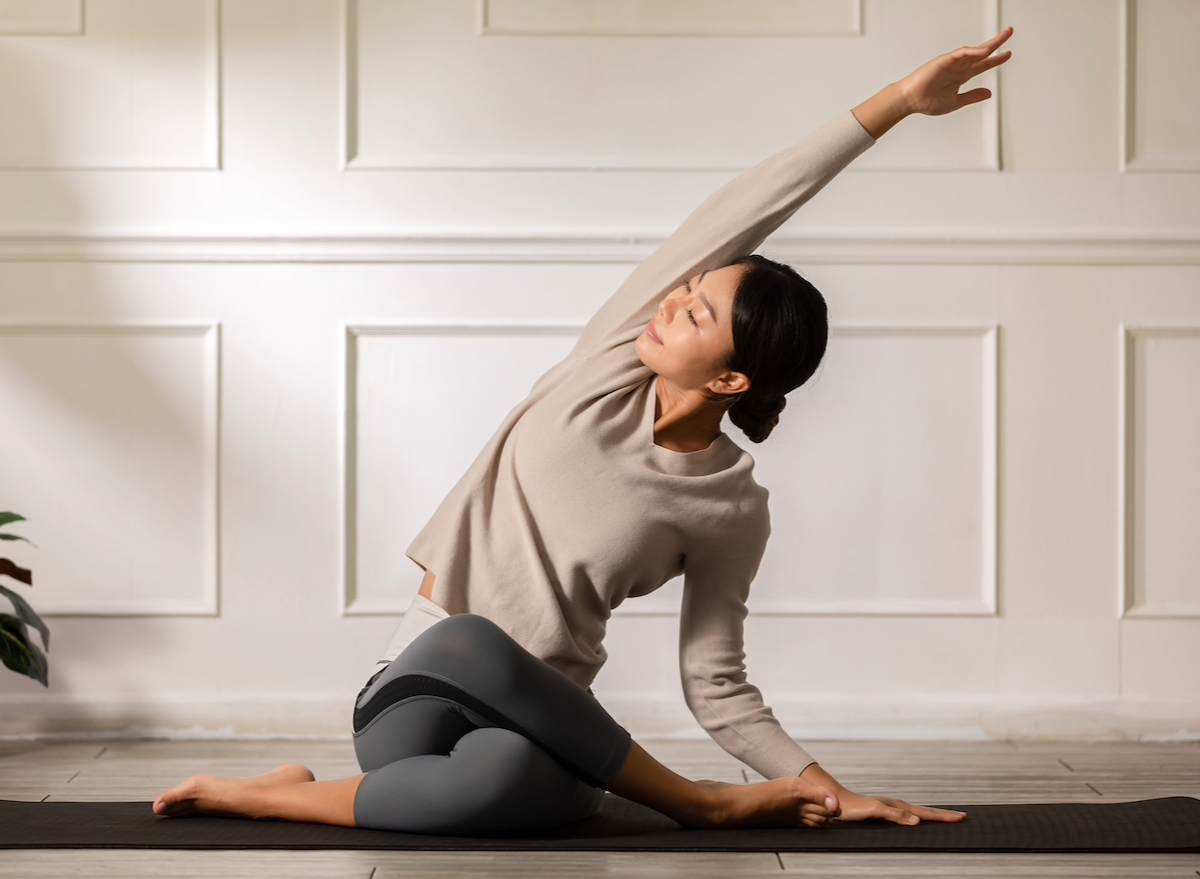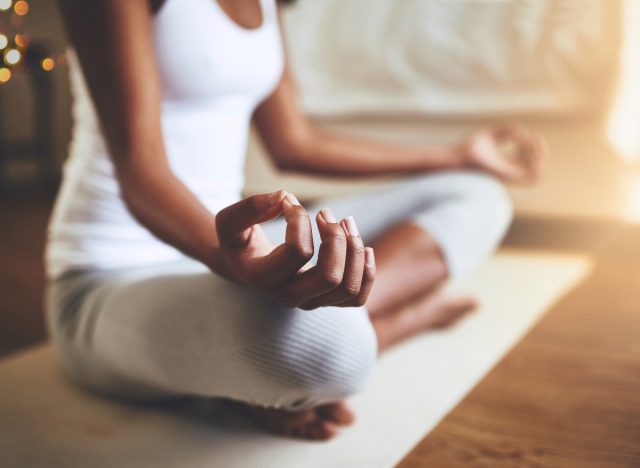How 'Bedtime Yoga' Helps You Get the Very Best Sleep

Amid navigating this busy thing called life, it's a common goal to achieve better sleep. After all, getting a restful night's sleep helps you feel ready and energized to take on the next day. But alas, many of us don't get the amount of sleep we truly need. The Centers for Disease Control and Prevention (CDC) reports one out of three adults in the United States don't get sufficient rest or sleep on a daily basis. Don't stress out, because there are plenty of ways you can fix that. If you're curious about implementing relaxing techniques into your nighttime routine to promote solid Z's, it's time to chat about bedtime yoga. But can bedtime yoga really help you sleep better? We spoke with an expert and found out the scoop. Read on to learn more, and when you're finished, be sure to check out People Are Using This Meditation Trick for Insomnia—and Claim It Works.
Can bedtime yoga help you sleep better?

Drumroll, please! Dorsey Standish, MS, a mechanical engineer, neuroscientist, wellness expert, 200-hour certified yoga teacher, and CEO of Mastermind Meditate, shares, "The overwhelming answer here is YES! Practicing yoga at any time of the day has been shown to be an effective way to treat insomnia and improve the quantity and quality of sleep. Bedtime is a great time to do gentle yoga and stretching. Any type of relaxing wind-down activity, including restorative yoga and deep breathing, acts to stimulate the parasympathetic 'rest and digest' branch of the autonomic nervous system, which helps you relax and ultimately sleep better."
RELATED: People Are 'Cricketing' Their Feet To Fall Asleep Faster—and Claim It Works
What are the best bedtime yoga poses for better sleep?
Standish recommends implementing calming poses such as seated forward folds, hip stretches, child's pose, hamstring stretches, and reclined twists into your bedtime routine. "All of these postures stimulate the parasympathetic ('rest and digest') branch of the autonomic nervous system and promote a calming internal focus," she explains.
If you use an electronic device such as your phone or iPad to guide you through each pose, be sure to turn down the blue light and stop using it after you finish your yoga to preserve a "relaxed, input-free state for drifting off to sleep," Standish instructs. "Ideally, you learn a bedtime yoga routine that you enjoy and then guide yourself through it each night, making adjustments as needed based on how your body feels," she adds. "This self-guided approach further supports an internal, calming focus and strengthens your interoceptive mind-body connection ability."
When you're just starting out, bedtime yoga doesn't need to be a full-fledged routine. Standish encourages you to begin small. "Plan for just five minutes of stretching and wind-down time, and see how your body and mind feel afterward and upon waking the next day," she suggests. "Doing a short bedtime yoga practice every night is more effective than an occasional longer practice, and eventually, the daily stretching will become part of your signal to your body and mind that it's time to relax and sleep deeply."









